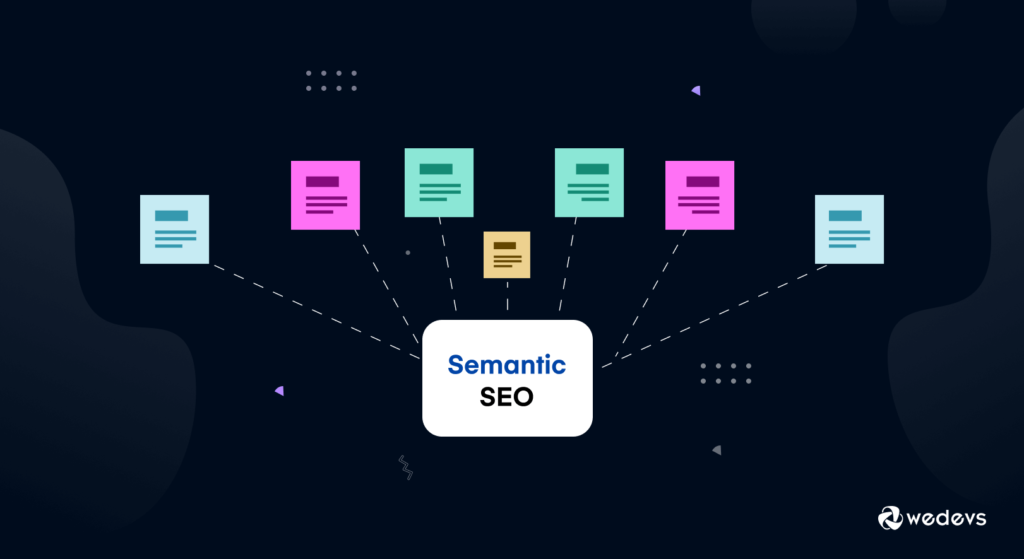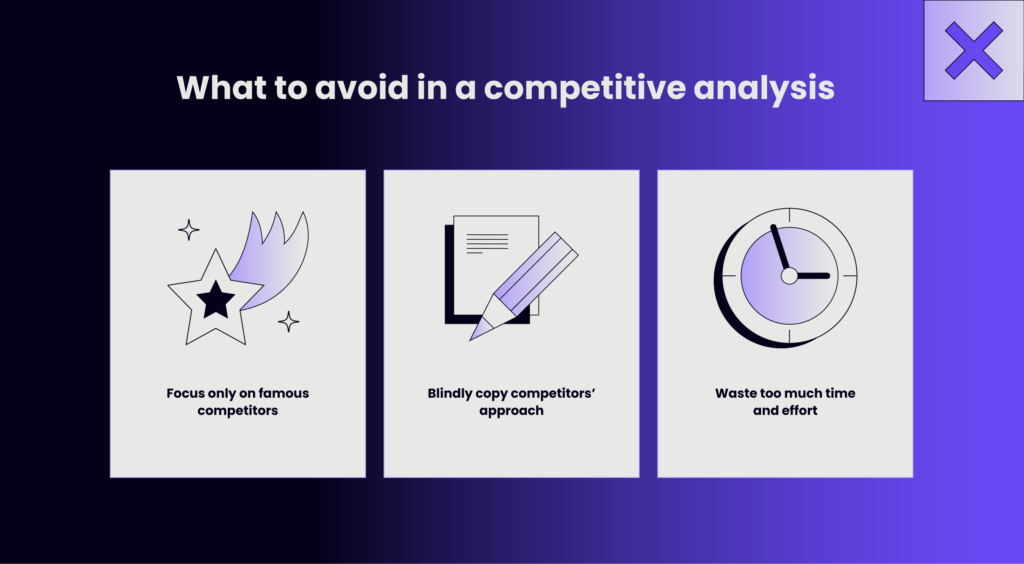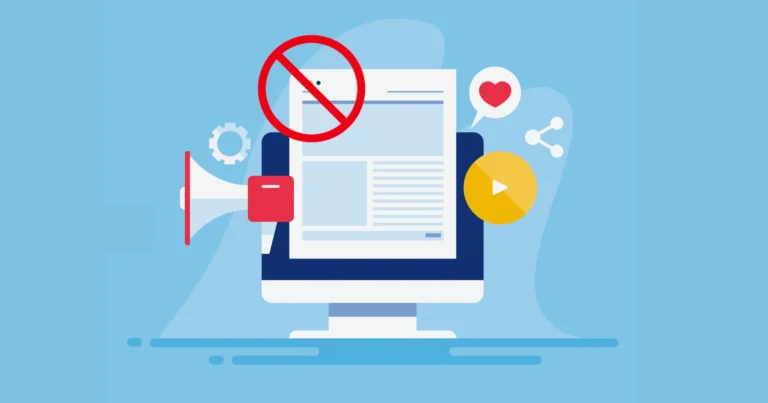Essential Guide to Effective Competitor Analysis for Your Business
Success in business isn’t just about offering great products or services. It’s about understanding the market, knowing your rivals, and figuring out how to stand out. That’s where competitor analysis comes into play.
At its core, competitor analysis is the process of identifying direct and indirect competitors and evaluating their strategies. It helps you pinpoint opportunities to strengthen your marketing strategy, target your target audience effectively, and carve out your competitive advantage. But there’s more to it than just monitoring competitors’ products or marketing efforts.
To truly thrive, you need a smarter, deeper approach. That’s where semantic SEO steps in. It focuses on creating content that matches user intent while satisfying search engines. When done right, combining competitor analysis with semantic SEO can help you gain insights, fine-tune your strategies, and stay ahead in an ever-changing market.

In this guide, we’ll walk you through actionable steps to master competitor analysis while leveraging the power of semantic SEO. Ready to transform your business? Let’s dive in.
Understanding the Principles of Semantic and Holistic SEO
Traditional SEO focuses on keywords and rankings. While important, this approach often misses the bigger picture. That’s where semantic SEO comes in.

Semantic SEO prioritizes understanding the meaning behind user queries. Instead of just matching keywords, it focuses on creating content that addresses the full context of a search. This means considering user intent, related topics, and how everything ties together. For example, instead of targeting just “best running shoes,” semantic SEO would also explore topics like “how to choose running shoes,” “running shoe care tips,” and “common running shoe mistakes.”
Holistic SEO takes it a step further. It’s about improving every aspect of your website—content quality, technical SEO, user experience, and relevance. The goal? To satisfy both users and search engines while ensuring long-term results.
Here’s how this ties to competitor analysis:
When you study competitors’ websites, you’re not just looking at keywords or traffic. You’re diving into how they structure their content, how they engage their target audience, and how they build topical authority.
By understanding these elements, you can create strategies that make your content not just competitive but superior. Combining semantic and holistic SEO with competitive analysis ensures you’re addressing real user needs while crafting content that outperforms the competition.

Step 1: Identifying Your Competitors
The first step in any competitive analysis is knowing who you’re up against. This includes both direct competitors—businesses offering similar products or services—and indirect competitors—those targeting the same market segment but with different offerings.
How to Identify Competitors
- Use Search Engines
Start with a Google search. Look up your main keywords and see who ranks on the first page. These are likely your strongest direct competitors. - Analyze Competitors’ Websites
Pay attention to the websites of businesses in your niche. Look at their design, messaging, and content to see how they attract your target market. - Explore Social Media Platforms
Social media isn’t just for engagement—it’s a goldmine for spotting competing brands. Search hashtags, industry terms, and locations to find businesses targeting your audience. - Check Marketplaces and Review Sites
Platforms like Amazon, Yelp, or G2 can reveal hidden competitors. Use these to spot potential competitors and discover how they position themselves.
Knowing your competitors allows you to evaluate their strengths and weaknesses. This insight is essential for refining your own business strategy. It also helps you identify opportunities where you can outperform them and gain a competitive advantage. By understanding the market landscape, you’ll know exactly where to focus your efforts and what to avoid.
Step 2: Analyzing Competitors’ Content Strategies
Once you’ve identified your direct and indirect competitors, the next step is to understand their content strategies. This means diving into what they publish, how they engage their audience, and where they’re excelling—or falling short.
How to Analyze Competitors’ Content
- Evaluate Competitors’ Websites
Start by exploring your competitors’ websites. Look at their blogs, landing pages, and product descriptions. Pay attention to their tone, formatting, and brand voice. Are they answering their audience’s questions effectively? - Check Social Media Posts
Social media reveals how competitors connect with their target audience. Analyze their posts to see what topics resonate, how often they post, and the level of engagement they receive. Look for patterns in their social media strategy. - Review Blog Topics
Identify the key themes competitors are writing about. Use tools like BuzzSumo or SEMrush to find out which topics drive the most traffic to their sites. Are there content gaps you can fill? This is where you can identify opportunities. - Study Competitors’ Keywords
Use keyword research tools to discover which terms competitors rank for. Do they dominate certain topics, or are there overlooked areas you can target? Group keywords into clusters to guide your own content creation.
What to Look For
- Content Depth: Are they producing in-depth guides or just surface-level articles?
- Engagement: Are readers commenting, sharing, or liking their posts?
- Call-to-Actions (CTAs): How are they driving conversions or encouraging repeat purchases?
By analyzing competitors’ content, you can refine your own content strategy. Whether it’s creating better resources, targeting unaddressed topics, or optimizing engagement, these insights will position your brand as a leader in your industry.v
Step 3: Keyword Research with a Semantic Approach
Keywords are the foundation of any successful marketing strategy, but it’s no longer about stuffing as many keywords as possible into your content. Instead, a semantic SEO approach focuses on understanding the intent behind those keywords and building meaningful, topic-rich content clusters.
How to Conduct Keyword Research
- Analyze Competitors’ Keywords
Use tools like Ahrefs or SEMrush to explore the keywords your competitors’ websites rank for. Look for both high-traffic and niche keywords they target. This will give you insight into their priorities and content gaps. - Focus on Intent
Categorize keywords based on their purpose:- Informational intent: Keywords like “what is competitor analysis” or “how to do a SWOT analysis.”
- Navigational intent: Keywords targeting specific brands, such as “best SEMrush alternatives.”
- Transactional intent: Keywords like “buy running shoes online” or “competitor analysis report template.”
- Create Keyword Clusters
Group related keywords into clusters that revolve around a central topic. For example:- Core keyword: “Competitor analysis.”
- Related keywords: “Competitive analysis example,” “competitive analysis framework,” “competitors’ products,” and “market research.”
- Identify Missed Opportunities
Find keywords your competitors rank for but you don’t. These can highlight areas where your content is lacking or where you can outperform their efforts.
Leveraging Semantic SEO
With a semantic SEO approach, you’re not just targeting keywords—you’re answering questions, solving problems, and addressing user needs. This builds competitive intelligence while improving your relevance to search engines.
Focusing on semantic keyword research ensures your content aligns with your audience’s expectations. It also helps you strengthen your market presence and create content that outperforms your competitors. By targeting the right keywords with the right intent, you’ll increase visibility, attract the target audience, and position your brand as a thought leader.
Step 4: Evaluating Backlink Strategies and Domain Authority
Backlinks are a critical component of SEO. They signal to search engines that your content is trustworthy and authoritative. Evaluating your competitors’ backlink strategies gives you valuable insights into their competitive advantage and opportunities to strengthen your own.
How to Evaluate Competitors’ Backlinks
- Use Backlink Analysis Tools
Tools like Ahrefs, Moz, or SEMrush can help you identify where your competitors are getting backlinks. Analyze these sources to understand:- The quality of the linking domains.
- The type of content attracting backlinks (e.g., blogs, guides, or press releases).
- Patterns in their backlink acquisition strategy.
- Check Linking Domains
Identify high-authority websites linking to your competitors’ websites. Are they industry blogs, news outlets, or review sites? This will reveal the relationships and networks your competitors leverage. - Compare Link Profiles
Assess the quantity and quality of backlinks:- Are your competitors relying on a large number of low-quality links?
- Or are they earning links from high-value domains in your market landscape?
- Spot Link Opportunities
Look for gaps in your own backlink profile. For example:- If a competitor has a strong presence in a niche publication, pitch your own content to the same source.
- If you find unlinked mentions of your brand, request a backlink.
What to Focus On
- Content That Attracts Links: Are competitors getting backlinks for specific guides, studies, or tools? Use this insight to create link-worthy content for your own site.
- Anchor Text Strategies: Analyze the keywords used in competitor backlinks. This can inform your own SEO and linking tactics.
By understanding where your competitors gain authority, you can develop a strategy to match—or exceed—their efforts. Building a robust backlink profile improves your site’s domain authority, boosts rankings, and enhances your market presence.
Quick Tip: Don’t just replicate competitors’ backlinks. Focus on building unique, high-quality relationships that reflect your own business’s values and expertise.
Step 5: Leveraging Competitor Insights for Holistic SEO Strategies
Now that you’ve analyzed your competitors’ content, keywords, and backlinks, it’s time to turn those insights into actionable strategies. The goal is to refine your own content strategy and improve every aspect of your business strategy, from content creation to audience engagement.
How to Use Competitor Insights
- Fill Content Gaps
Identify topics your competitors are covering that you’re not. Use tools like SEMrush or BuzzSumo to find keywords and themes they dominate. Create better, more comprehensive content to fill these gaps and capture additional market share. - Improve User Experience
Study how competitors structure their websites. Are their navigation menus simple? Do they use clear calls-to-action? Optimize your site to enhance the user journey and encourage repeat purchases. - Refine Social Media Strategy
Look at how competitors engage their audience on social media platforms. Are they running campaigns, sharing testimonials, or promoting blog content? Use this data to shape your social media strategy and connect with your target audience more effectively. - Strengthen Brand Voice
Evaluate how your competitors communicate. Are they professional, conversational, or quirky? Use these observations to craft a distinct brand voice that resonates with your audience. - Adapt to Market Trends
Stay updated on market trends and industry shifts that your competitors are capitalizing on. For example, if a competitor is using interactive content to engage users, consider integrating similar formats into your strategy.
Actionable Tactics
- Launch Unique Campaigns: Use competitor data to design campaigns that highlight your strengths, such as a unique product feature or a superior pricing strategy.
- Enhance Product Offerings: If competitors are gaining traction due to specific product features, evaluate whether you can offer similar or better value to your customers.
- Optimize for Engagement: Analyze what type of content or strategies bring competitors the most traffic and adapt them to your audience.
Leveraging competitor insights helps you make informed decisions and create strategies that are proven to work. It’s not about copying—it’s about learning, improving, and outpacing your competitors in ways that align with your brand’s unique goals.
Final Tip Always keep testing and adapting. Competitor insights are a starting point, but your own business success depends on continuous learning and innovation.
Tools and Resources for Comprehensive Competitor Analysis
Using the right tools can take your competitive analysis framework to the next level. These tools help you collect, organize, and analyze data efficiently, ensuring you uncover every opportunity to stay ahead.

Essential Competitor Analysis Tools
- SEMrush
A versatile tool for keyword research, backlink analysis, and competitive benchmarking. It allows you to evaluate your competitors’ websites, track their rankings, and discover the keywords driving the most traffic. - Ahrefs
Best for in-depth backlink analysis. Use Ahrefs to see which sites link to your competitors and which of their content is most successful. It’s invaluable for finding content and backlink opportunities. - SimilarWeb
Perfect for understanding your market presence. SimilarWeb provides insights into traffic sources, audience behavior, and social media strategy comparisons. - BuzzSumo
Great for content research. It helps you find trending topics, analyze engagement metrics, and uncover which of your competitors’ content is performing best. - Google Search Console
While focused on your site’s performance, it can indirectly support competitive analysis by identifying search queries where your competitors outrank you. This helps you prioritize content updates and new strategies. - Social Media Monitoring Tools (Hootsuite, Sprout Social)
These tools track competitors’ social media platforms, showing their engagement strategies, popular posts, and audience interactions.
How to Use These Tools Effectively
- Analyze Competitors’ Ads: Tools like SEMrush can help you see which paid campaigns competitors are running. This reveals their focus areas and marketing tactics.
- Evaluate Content Gaps: BuzzSumo highlights gaps in your own content strategy compared to competitors. Use this to create content that addresses missed opportunities.
- Track Backlink Opportunities: Ahrefs and SimilarWeb uncover link sources that are helping competitors build domain authority.
These tools don’t just provide data—they help you turn data into actionable insights. With the right tools, you can refine your business strategy, strengthen your competitive intelligence, and create a roadmap for success.
Common Mistakes and How to Avoid Them
Even with the best tools and strategies, it’s easy to make missteps in competitive analysis. Avoiding these common mistakes ensures you get the most value from your efforts and keep your business on the right track.

- Overlooking Indirect Competitors Focusing only on direct competitors can lead to a narrow perspective. Indirect competitors—those targeting your target audience with different products or services—can still take away market share.
- How to Avoid:
Include indirect competitors in your analysis. Study their marketing strategies, competitors’ ads, and content to uncover potential threats and opportunities.
- How to Avoid:
- Ignoring Qualitative Insights Numbers and data are important, but so is understanding customer sentiment. Ignoring qualitative feedback, like customer reviews or social media posts, can result in missed insights.
- How to Avoid:
Pay attention to review sites, competitor forums, and social media platforms to see what customers like or dislike. Use this information to enhance your own company’s offerings.
- How to Avoid:
- Copying Competitors Instead of Innovating Trying to replicate what competitors do without adapting it to your unique brand voice can dilute your identity. What works for them may not work for you.
- How to Avoid:
Use competitor insights to inspire innovation. Find ways to improve on their strategies while staying true to your own business and its unique value.
- How to Avoid:
- Neglecting Secondary Research Relying solely on primary data—like your own findings—can limit your understanding of the broader market landscape.
- How to Avoid:
Incorporate secondary research from industry reports, market studies, and credible sources. This ensures your strategies are grounded in both micro and macro trends.
- How to Avoid:
- Failing to Adapt to Market Changes Competitor analysis is not a one-and-done activity. Markets evolve, and so do competitors. Failing to update your analysis can leave you behind.
- How to Avoid:
Schedule regular updates to your competitive analysis framework. Use tools to monitor competitors’ progress and adjust your business strategy accordingly.
- How to Avoid:
Final Tip: Balance Data with Action The ultimate mistake is collecting data without acting on it. Your competitive analysis report is only as good as the strategies it informs.
Conclusion: The Future of Competitor Analysis and Semantic SEO
Competitor analysis is no longer just about knowing who your rivals are. It’s about understanding their strategies, leveraging their strengths, and capitalizing on their weaknesses. When paired with semantic SEO, it transforms into a powerful tool for driving growth and maintaining a competitive advantage.
By analyzing competitors’ products, content strategies, and backlink profiles, you can refine your approach and target your target audience more effectively. Through a competitive analysis framework, you’ll uncover hidden opportunities to strengthen your market presence and dominate your market landscape.
Why This Matters for the Long-Term
- Stay Ahead of Market Trends: Regular competitor analysis helps you adapt to changing market trends and identify opportunities before your competitors do.
- Enhance Your Business Strategy: Use insights to build a smarter, data-driven business strategy that drives sustainable success.
- Build Topical Authority: Aligning competitor analysis with semantic SEO ensures your content not only ranks well but also provides lasting value to your audience.
The digital world is constantly evolving, and so are your competitors. The businesses that thrive are those that continuously innovate, monitor, and adjust their strategies to stay ahead.
Next Steps
Start by identifying your direct and indirect competitors. Dive deep into their strategies, refine your own content strategy, and use the tools and tactics we’ve outlined to build a winning formula.
Success isn’t just about doing things differently—it’s about doing them better. With the right insights and strategies, you can turn competitor analysis into your biggest advantage.
Disclosure: Our blog contains affiliate links to products. We may receive a commission for purchases made through these links. However, this does not impact our reviews and comparisons. We try our best to keep things fair and balanced, in order to help you make the best choice for you.







